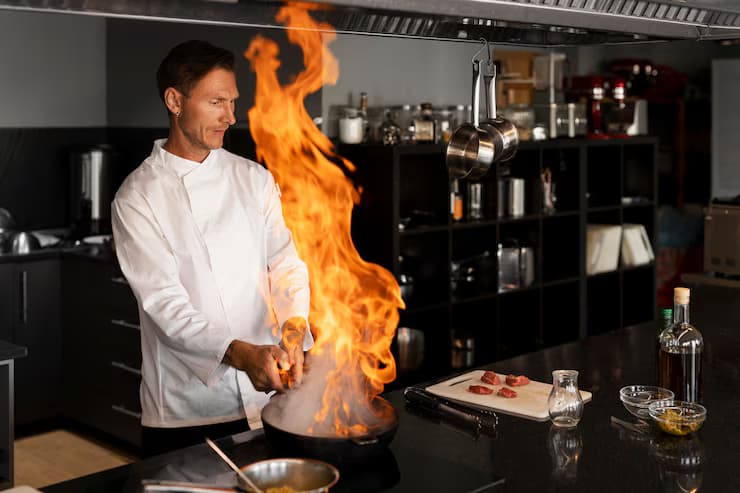Introduction
Ensuring kitchen safety in Kenilworth involves making informed choices about fire suppression systems designed to protect against potential fire hazards. Here, we'll explore key fire suppression options suitable for Kenilworth kitchens, emphasizing their importance in safeguarding lives and property.
1. Wet Chemical Fire Suppression Systems
Wet chemical systems are specifically engineered to combat grease fires commonly found in commercial kitchens. When activated, these systems release a potassium carbonate-based liquid agent that reacts with grease to form a soapy foam, effectively smothering the fire and preventing re-ignition. Wet chemical systems are highly effective, safe for use around cooking equipment, and designed to minimize damage to kitchen appliances and surfaces.
2. Dry Chemical Fire Suppression Systems
Dry chemical systems utilize sodium bicarbonate or potassium bicarbonate powder to extinguish fires by disrupting the chemical reaction of the fire. They are versatile and suitable for various types of kitchen fires, including those involving flammable liquids and electrical equipment. Dry chemical systems provide rapid fire suppression and can be installed in both residential and commercial kitchens.
3. Water Mist Fire Suppression Systems
Water mist systems disperse ultra-fine water droplets to cool the fire and displace oxygen, suppressing flames without causing electrical hazards. These systems are environmentally friendly and suitable for kitchens where traditional water-based systems may not be safe due to the presence of electrical appliances. Water mist systems leave minimal residue after activation and provide effective fire suppression.
4. Automatic Fire Suppression Systems
Automatic fire suppression systems are equipped with sensors that detect heat or smoke, automatically activating the suppression mechanism in case of fire. These systems provide rapid response and are ideal for unattended kitchens or commercial settings where immediate action is essential to prevent fire spread and potential damage.
5. Portable Fire Extinguishers
In addition to fixed suppression systems, portable fire extinguishers are essential for kitchen fire safety. Class K fire extinguishers are specifically designed for kitchen fires involving cooking oils and fats. Proper training should be provided to kitchen staff on how to use fire extinguishers effectively in case of emergencies.
Choosing the Right Suppression System
When selecting a fire suppression system for a Kenilworth kitchen, consider the following factors:
-
Type of Cooking Equipment: Assess the types of cooking equipment used to determine the most suitable suppression system.
-
Kitchen Layout and Size: Evaluate the layout and size of the kitchen to ensure adequate coverage and placement of fire suppression equipment.
-
Compliance with Regulations: Ensure that the chosen suppression system complies with local fire safety regulations and standards.
Conclusion
In conclusion, prioritizing kitchen fire suppression kenilworth requires making essential fire suppression choices tailored to the unique needs of residential and commercial kitchens. By understanding the features and benefits of different suppression systems and considering specific kitchen requirements, property owners and managers can effectively protect lives, property, and assets from the devastating consequences of kitchen fires. Invest in appropriate fire suppression technology and implement proactive measures to enhance kitchen safety and minimize fire risks effectively.


No comments yet